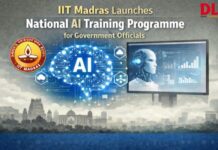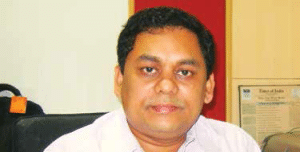
 Development of skills in India needs a renewed focus from the industry as well as private players. It includes bridging the skills mismatch at the college level and in rural hinterlands. Chhavi Bakaria, ENN, explores further
Development of skills in India needs a renewed focus from the industry as well as private players. It includes bridging the skills mismatch at the college level and in rural hinterlands. Chhavi Bakaria, ENN, explores further
“You can’t cross the sea merely by standing and staring at the water.” – Rabindranath Tagore
Tagore’s words are as true today as when he spoke them, especially in context of the massive target set by the Government — Skilling 500 million Indians by 2022.
It indeed is a huge task that the government has set for itself, but it cannot be achieved unless contributions are made by all stakeholders including both public and the private sector. An added urgency comes with the rapid growth in the country’s population that is accompanied by an unprecedented demographic transition.
In the coming three to four decades India will become a remarkably young country, with more than half of its population under 25, an obvious advantage when compared to other Asian nations such as Japan that are grappling with a graying population.
And for India to reap economic benefits from its often quoted demographic dividend, the challenge of skill development needs to be addressed in a combat mode.
“We are working towards achieving national goal of skilling 500 million Indians by 2022. While doing so, we have a larger challenge at hand and that is to excite and engage the youth of the country to participate without inhibitions,” says Dr Pallam Raju, Union Minister for Human Resource Development.
“There is a need for concentrated efforts to create an ecosystem that assigns dignity to vocational education. This will go a long way in addressing the current aspiration mismatch where everyone aspires for a qualification, but qualifications alone don’t lead to jobs,” he adds.
 Apart from a majority Apart from a majorityof degree and diploma holders, approximately 200 million students drop out of classes IX, X, XI and XII, and are in dire need of vocational skills to become employable Around 64% of India’s population is expected to be in the age bracket of 15–59 years by 2026, with only 13% of the total aged above 60 years |
Government in charge
Recognising its importance, the Government of India has adopted skill development as a national priority over the next 10 years. Through the 11th and 12th Five-Year Plans it has finalised a detailed road-map for skill development in India, and favoured the formation of Skill Development Missions, both at the state and national levels.
At national level, a ‘Coordinated Action on Skill Development’ with threetier institutional structure consisting of the PM’s National Council on Skill Development, the National Skill Development Coordination Board (NSDCB) and the National Skill Development Corporation (NSDC) was created in early 2008.
Apart from that around 17 ministries, several sector skill councils (SSCs), 35 state skill development missions, and several trade and industry bodies — are putting their best foot forward to push the national skill development agenda. The Ministry of Labour Employment has set up 2500 government ITIs and 7000 private ITIs to fulfill their training targets. The vocational training infrastructure under the Ministry of Human Resource and Development (MHRD) consists of public/ privately owned Polytechnics and vocational schools.
The Figure illustrates national level agencies which come under the purview of National Skill Development Authority, their key initiatives and their respective targets for 2022.
In 2013, the Government constituted the National Skill Development Agency (NSDA) for coordinating and harmonising the skill development efforts of the Centre and the private sector to achieve the skill targets of the 12th Five-Year Plan and beyond.
J P Rai, Director General, NSDA, says, “There is a need to inculcate the value of skills. We must recognise the importance of training providers and they must reach out to the district level. NSDA will coordinate and harmonise the skill development efforts of the Government and the private sector to achieve the skilling targets of the 12th Plan and beyond and endeavour to bridge the social, regional, gender and economic divide.”
|
Upping employability skills in fresh graduates
India is the 10th largest economy in the world and business houses in the country will require workers, the young in particular.
But, unlike in the economically saturated markets of the U S and Europe, where many highly skilled applicants are fighting over few jobs, millions of job seekers in India lack the skills desired by the Industry even after acquiring impressive sounding diplomas or degrees.
Vocational education and training (or VET) in professional courses like engineering, accountancy, nursing, medicine, architecture, pharmacy, law, etc is the need of the hour to make students industry-ready.
“When we build skills among our students, we are building the entire nation, but education imparted in majority of institutions is exam-oriented and not skilloriented. There is an increasing need for sector specific skills through professional trainings”, says VSN Raju, Chief Operating Officer, Globarena Technologies.

“We are working towards achieving national goal of skilling 500 million Indians by 2022. While doing so, we have a larger challenge at hand and that is to excite and engage the youth of the country to participate without inhibitions.”
Dr M M Pallam Raju, Union Minister for Human Resource Development

“I think vocational education should be done from the school level itself. Also, very specific, rolebased vocational education has to be imparted once students finish college.”
T Muralidharan, Chairman, TMI Group
An increasing number of players from the Industry as well as private skills training providers are collaborating with academia to impart industry desired jobskills among the young graduates.
For instance, TMI Group that works in sectors like retail, IT, healthcare, finance and automobile. Through the TMI e2E Academy and YES (Youth Employability Centre) it not only imparts job-specific training to the unemployed graduates, but also accesses their aptitude for a particular job role through proper counseling and guidance. It has placement tie-ups with big corporate such as Mahindra, Tata Motors, Axis Banks, HDFC Sales, Indian Immunological Ltd, Coromondal, Unilever Cell, etc.
“The university system does not create many skills other than maybe to write some exams. Also the students do not realise the need for skilling when they are in campus, but when they fail to find a job that is when they go for skills training. I think vocational education should be done from the school level itself from XIth or XIIth class onwards. Also, very specific role-based vocational education has to be imparted once they finish college and before they join the industry,” says T Muralidharan, Chairman, TMI Group.
Ajay Sachdeva, Director Edulight Careers Pvt Ltd elaborates how vocational education can be an alternative to pricey, formal higher education. He says, “The need of the hour is not just expensive long-term courses, but also or in isolation the industry specific short-term courses, with proper soft skills training that will lead to all-round excellence. Such training ensures that the students are ‘Industry ready’. Even abroad, the young brigade, have largely embraced short – term vocational courses vis-à-vis the more expensive long term ones. For India’s youth this is the way forward for a brighter and secure future.”
Private Sector in rural India
XIIth pass, 24-year-old Krishna Gopal, hails from a farmer’s background and always knew that he would eventually enter the ancestral farming arena, but fate had other plans. He joined a twomonth Food Production course at the DLF Training Centre in Gurgaon.
“I was idle and clueless about my future and career goals, but after the training, I learnt many new aspects of Indian cookery through the theory and practical classes. Now, I am working as a chef at DLF City Club Phase IV in Gurgaon and earning `8,500 per month. I have become independent and I feel empowered,” says Krishna

“SkillSonics imparts global level skills to entry-level and existing technicians. There is no dearth of good workers in India, but they lack opportunities. We have seen people transforming after finishing a course and even the companies have paid them more.”
G P Chandra Kumar, Chairman and CEO, SkillSonics India Pvt Ltd
There is a need to skill millions like Krishna, as the skilling challenge is magnified by the fact that 70 percent of young population falls in rural and tribal India. The numbers are huge and solving the same is almost impossible unless there is integration of skill development and the formal education system. It demands a collective effort by varied government initiatives, Public-Private Partnership (PPP) initiatives to set up schools and training institutes and National Skills Qualification Framework.
A lot can be achieved through government and private partnership in tier-2 and tier-3 cities. Currently, there are 2000 government ITIs in India and an additional 1500 have been proposed for the 12th Five-Year Plan (2012- 2017). By 2012, 1775 of the existing 2000 ITIs had been adopted by Industry Partners under the upgrading scheme of Directorate General of Employment & Training (DGE&T).
Upcoming trends
Siddhartha Das, National Skills Leader, Ernst & Young, elaborates, “Vocational training through channels, such as apprenticeship, on-the-job training, financial and technical support to industrial training institutes, and the provision of decent employment opportunities continue to be the backbone of the skill development programmes of countries such as New Zealand, Germany, South Korea and Australia. The industry sector in India is now poised to step up its role in the country’s skill development initiatives.”
As per a report by the industry body FICCI, in the 12th Plan (2012-17), Ministry of Human Resource Development (MHRD) initiatives in VET present an opportunity of approximately USD 7 million per annum in the areas like content and trainer development. The Plan envisages the private sector to be engaged under the PPP model as ‘Academic Partner’ for ‘Teacher and Assessor training’ and ‘Academic content and curriculum development’. Thus foreign players can strategically engage with MHRD. Even the foreign players can participate in the training schemes by partnering with MoL&E or at the state level departments relating to VET to offer content, curriculum and Train the Trainer services to existing and upcoming ITIs.
The National Skills Qualifications Framework (NSQF) that is currently under development within the India- EU Skills Development Project and will be anchored by NSDA. Pilot vocational training initiatives are already underway with private and foreign institutional collaborations. For example, a pilot project has been launched with the coverage of 40 schools in the state of Haryana and 4 SSCs (Automotive, Security, IT and retail). The SSCs have developed occupational standards, curriculum and assessment packages and training modules across these sectors. CBSE schools are soon going to feature vocational courses.
Aspirational Gap is the Biggest Challenge
Share with us the vision behind setting up of TalentSprint. What are the main challenges in the skill development sector? |
 Key metrics for FY 2013-14 Key metrics for FY 2013-14Annual Target 72.8 lakh persons Reported Progress7.66lakh persons |
 Emerging Sectors Emerging Sectors• Retail • Construction Food Processing and beverages • Repairing and Services; Textiles;Handicrafts and Handloom • Gems and Jewelry • Tourism and Hospitality;Oil and gas • Computer Based Accountancy /IT and ITES, Mines and Minerals |
|









 Santanu Paul, MD & CEO, TalentSprint, tells about challenges in the sector
Santanu Paul, MD & CEO, TalentSprint, tells about challenges in the sector Gayatri Paul, Associate Director, DLF Foundation, shares her experience
Gayatri Paul, Associate Director, DLF Foundation, shares her experience















